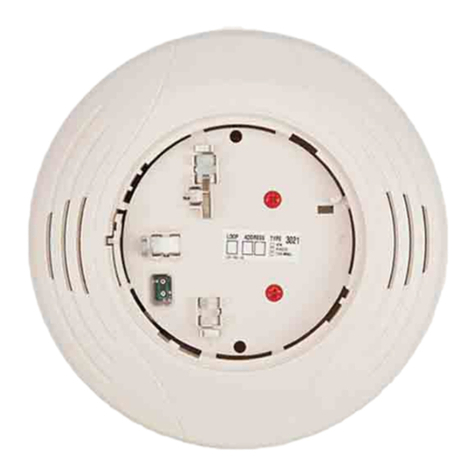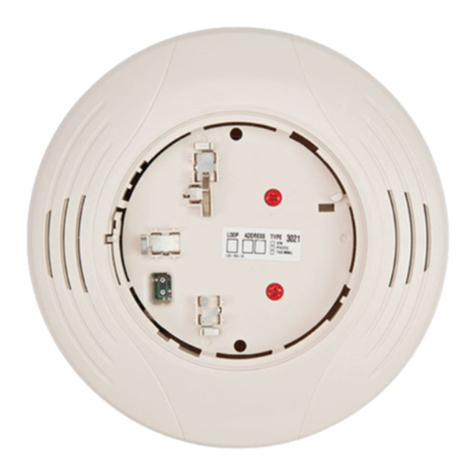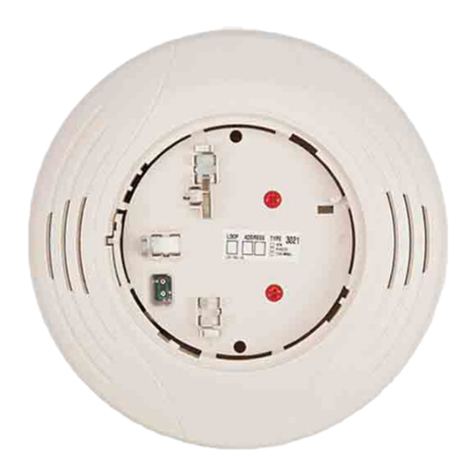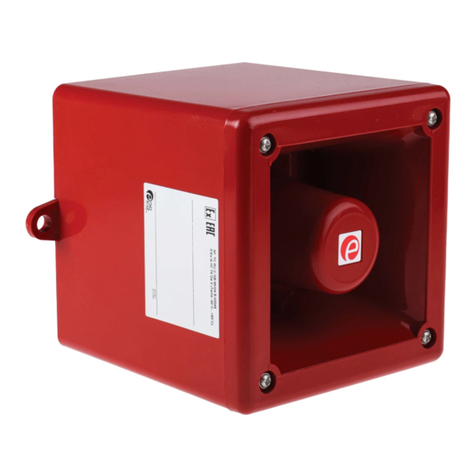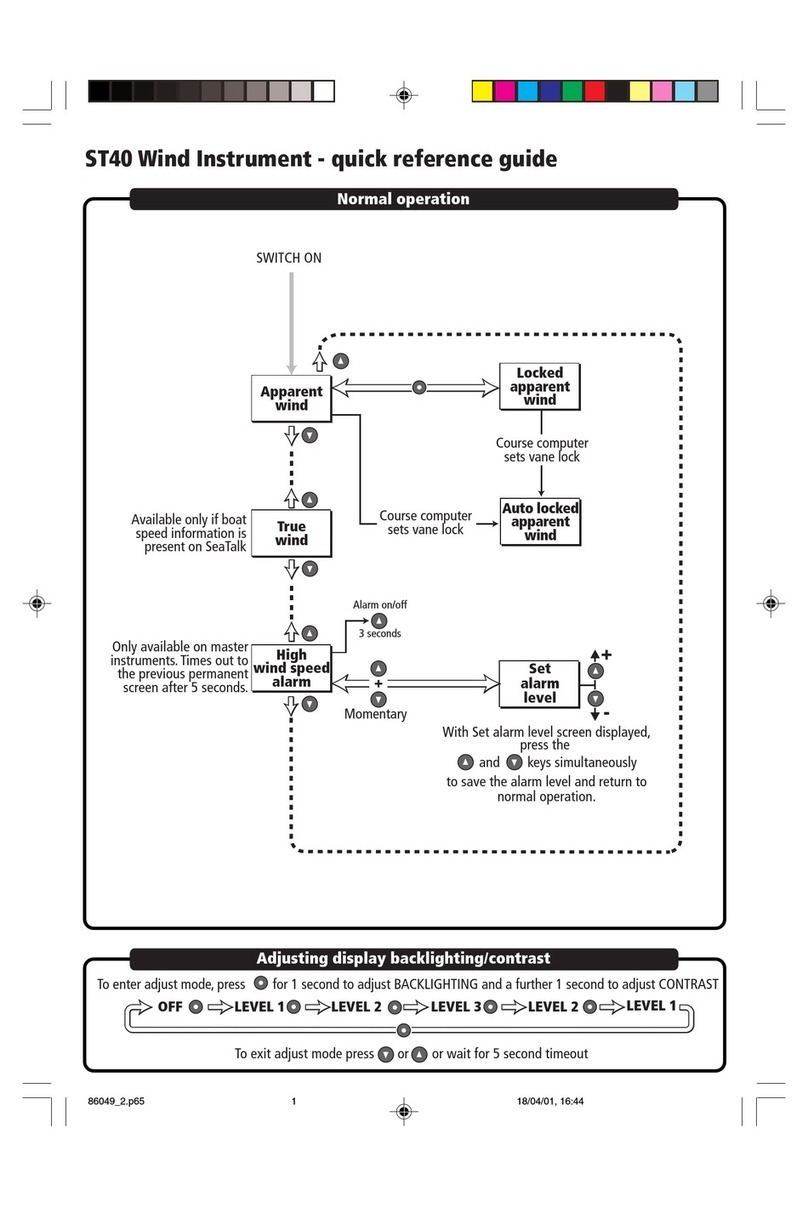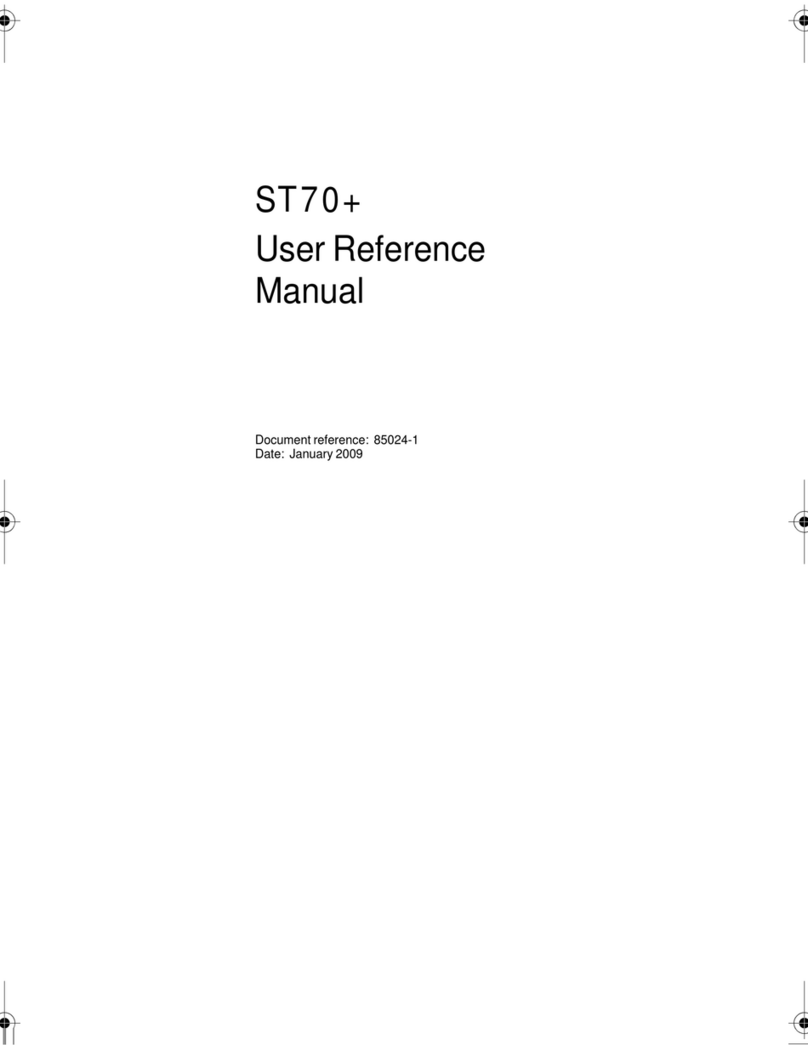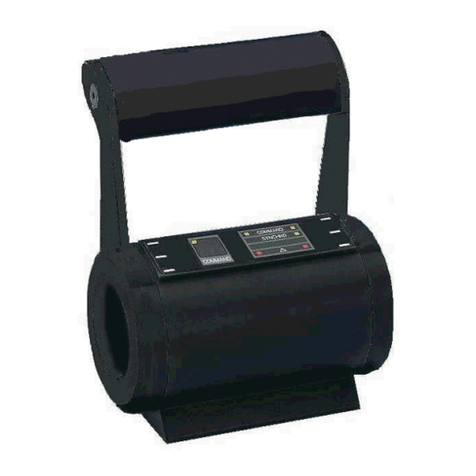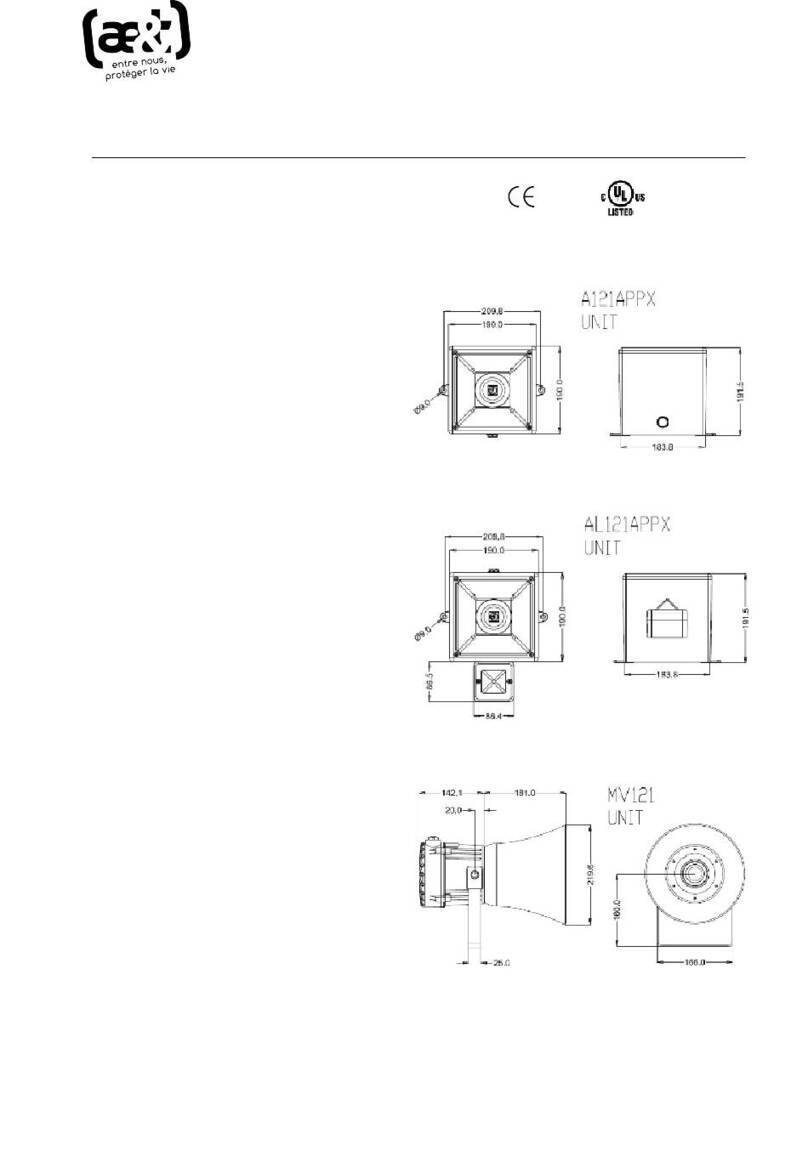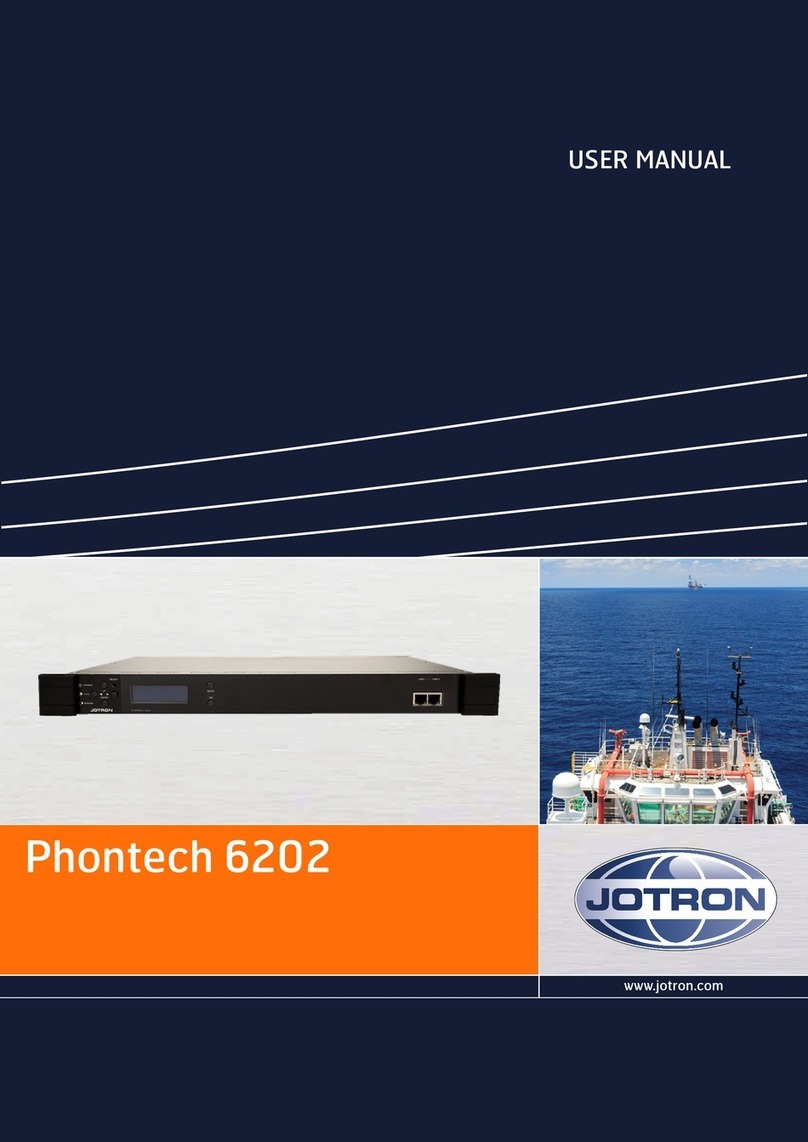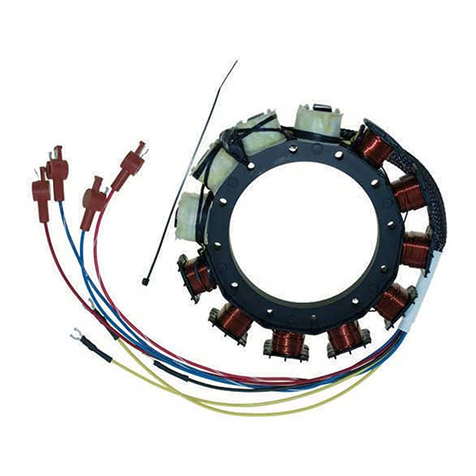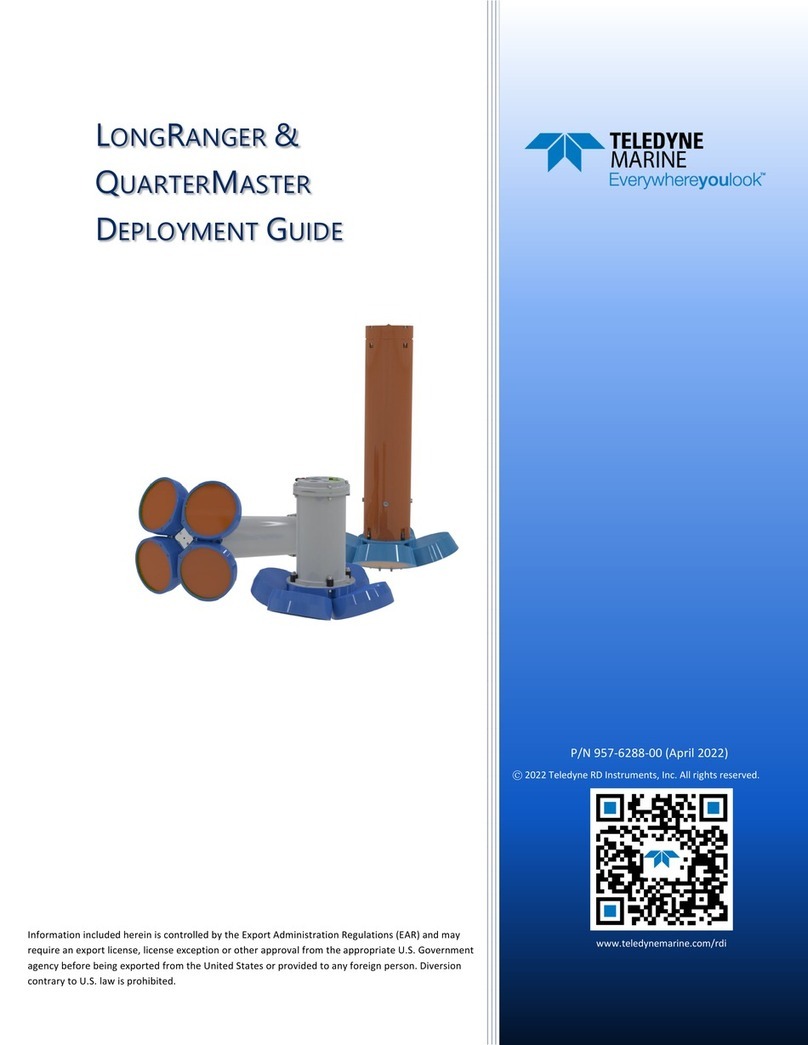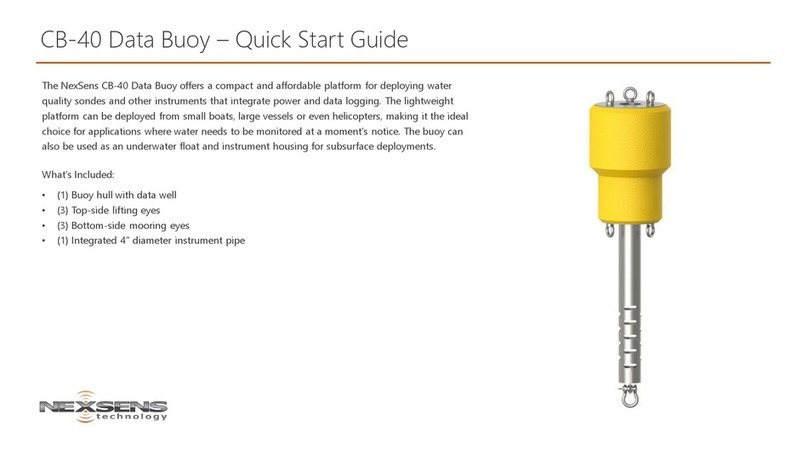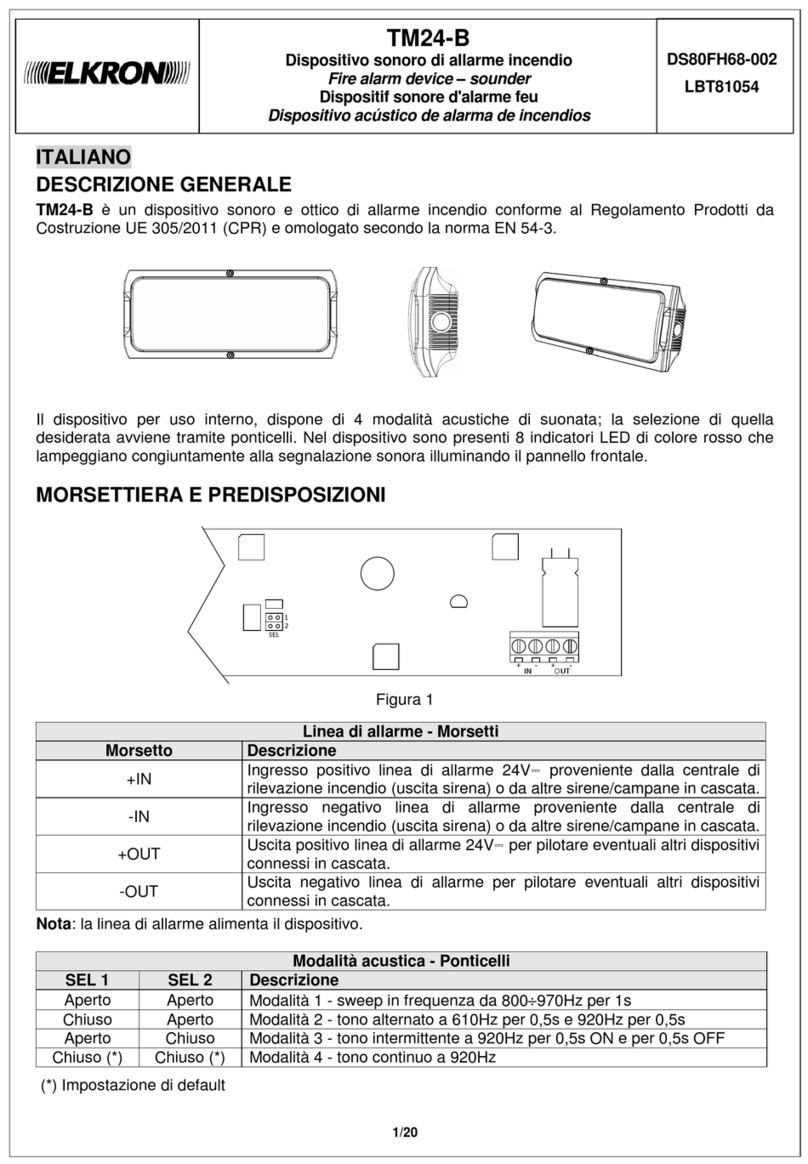TRIGA TR-B200SR-WH User manual

TR-B200SR-WH, TR-B200SR-IV
Intelligent Sounder Base
INSTALLATION AND MAINTENANCE INSTRUCTIONS
BEFORE INSTALLING
Read System Sensor’s Applications Guide for System Smoke Detectors
(SPAG91), which provides detailed information on sensor spacing, placement,
zoning, wiring, and special applications. This manual is available online at
www.systemsensor.com. NFPA 72 and NEMA guidelines should be observed.
NOTICE: This manual should be left with the owner/user of this equipment.
IMPORTANT: The detector used with this base must be tested and maintained
regularly following NFPA 72 requirements. The detector should be cleaned at
least once a year.
GENERAL DESCRIPTION
The TR-B200SR-WH and TR-B200SR-IV sounder bases are used with address-
able detector heads. Refer to the appropriate manual for more information on
sensors.
The TR-B200SR-WH and TR-B200SR-IV sounder bases were designed specifi-
cally to meet the needs of dwelling unit applications. It offers maximum flex-
ibility in configuration and operation to meet or exceed the requirements of
UL268 and UL464.
The sounder base is capable of producing either the distinctive three-pulse
temporal pattern (ANSI Temporal 3) fire alarm signal now required by NFPA
72 for commercial and residential applications or a continuous tone by simply
removing the included jumper from the device.
The sounder base is intended for use with intelligent systems. The sounder
base requires an external 24 VDC power supply. The connections for the
external power supply and the communication loop are isolated to prevent
electrical interaction between them. Refer to the panel manual for maximum
allowable number of units per loop.
NOTE: For NFPA72 Installations, the Temporal 3 tone should be used for pub-
lic mode evacuation.
NOTE: When not used as a supplementary evacuation system, the external 24
VDC supply shall be treated as a component of the main power supply system
and shall fall under the requirements of the main power supply system per
NFPA 72.
WIRING GUIDELINES
All wiring must be installed in compliance with the National Electrical Code
and the local codes having jurisdiction and must not be of such length or wire
size which would cause the base to operate outside of its published specifica-
tions. The conductors used to connect smoke sensors to control panels and
accessory devices should be color coded to reduce the likelihood of wiring
errors. Improper connections can prevent a system from responding properly
in the event of a fire.
Specifications
Base Diameter: 6.875" (17.46 cm)
Base Height (less sensor): 2.0" (5.08 cm)
Weight: 0.50 lb. (227 gm)
Operating Temperature Range: Refer to the applicable sensor’s operating temperature range provided in the sensor’s installation manual.
Operating Humidity Range: 10% to 93% relative humidity (non-condensing)
External Supply Electrical Ratings
External Supply Voltage: 16 to 33 VDC (VFWR)
Standby Current: 500 μA maximum
Alarm Current: 35 mA maximum
SLC Electrical Ratings
SLC Operating Voltage: 15 to 32 VDC
SLC Standby Current: 300 μA maximum
Sound Output Greater than 85 dBA minimum measured in a UL reverberant room at 10 feet (3.1m), 24 Volts (in continuous tone)
Wire sizes up to 12 AWG (2.5 mm2) may be used with the base. The sounder
base will be shipped with the screw terminals set for 14 AWG wiring. If
12 AWG wire is to be used, back out the screws to allow the wire to fit beneath
the clamping plates. For best system performance, the power (+ and -) wires
and the communication circuit wires should be twisted pair or shielded cable
installed in a separate grounded conduit to protect the communication loop
from electrical interference.
Make wire connections by stripping about 3
/8" (10 mm) of insulation from the
end of the wire. Then, slide the bare end of the wire under the appropriate
clamping plate (See Figure 1), and tighten the clamping plate screw. Do NOT
loop the wire under the clamping plate. (See Figure 2.) The wiring diagram for
a typical 2-wire intelligent system is shown in Figure 5.
CAUTION
For system monitoring - for terminals 4 and 5, do not use looped wire under termi-
nals. Break wire run as shown in Figure 2 to provide monitoring of connections.
FIGURE 1. FIGURE 2.
1
1
2
2
3
3
4
4
5
5
6
6
C0471-07 C0473-00
TR-B200SR-WH/TR-B200SR-IV TERMINALS
No. Function
1. Not Used
2. Positive (+) Comm. Line In and Out
3. Negative (-) Comm. Line In and Out
4. External Supply Positive (+)
5. External Supply Negative (-)
6. Sounder Base Interconnect
TRIGA Life Safety Systems, LLC
7600 Olde Eight Rd.
Hudson, Ohio 4426-1057
I56-3392TRG-011
base/sensor cross reference chart ==>base/sensor cross reference chart ==>
Source:
For a list of compatible sensors, refer to the Sys-
tem Sensor website at www.systemsensor.com.
1/29/2021
For a complete list of compatible sensors, refer to
the Base/Sensor Cross Reference Chart at triga-
global.com.
4/23/2021 DELETE: For a complete list of compat-4/23/2021 DELETE: For a complete list of compat-
ible bases, refer to the Base/Sensor Cross Referenceible bases, refer to the Base/Sensor Cross Reference
Chart at trigaglobal.com.Chart at trigaglobal.com.
1 I56-3392TRG-011
4/22/2021

MOUNTING
Mount the TR-B200SR-WH/TR-B200SR-IV mounting plate directly to an elec-
trical box. The plate will mount directly to 4" (10.2cm) square (with and with-
out plaster ring), 4" (10.2cm) octagon, 3½" (8.9 cm) octagon, single gang or
double gang junction boxes.
1. Connect field wiring to terminals, as shown in Figure 1 and 2.
2. Attach the mounting plate to the junction box as shown in Figure 3.
3. To mount the sounder base, hook the tab on the sounder base to the groove
on the mounting plate.
4. Then, swing the sounder base into position to engage the pins on the
product with the terminals on the mounting plate.
5. Secure the sounder base by tightening the mounting screws.
6. Install a compatible smoke sensor as described in the installation manual
for the sensor.
CAUTION
Do not over tighten mounting plate screws; this may cause mounting plate
to flex.
FIGURE 3. MOUNTING
Location of jumper–
remove to enable
continuous tone
C0891-08
TAMPER RESISTANT FEATURE
NOTE: Do not use the tamper-resist feature if the removal tool is to be used.
This detector base includes a tamper-resist feature that prevents its removal
from the base without the use of a tool. To activate this feature, break the tab
from the detector base as shown in Figure 4A. Then, install the detector. To
remove the detector from the base once the tamper-resist feature has been ac-
tivated, insert a small-bladed screwdriver into the slot from the top and press
down on the lever. (See Figure 4B). This allows the detector to be rotated
counterclockwise for removal. The tamper-resist feature can be defeated by
breaking and removing the plastic lever from the base. However, this prevents
the feature from being used again.
TESTING AND MAINTENANCE
Sensors and bases must be tested after installation and as an integral part of
a periodic maintenance program. Test the TR-B200SR-WH/TR-B200SR-IV as
follows:
NOTE: Before testing, notify the proper authorities that the smoke sensor
system is undergoing maintenance and, therefore, will be temporarily out of
service. Disable the system undergoing maintenance to prevent unwanted
alarms.
1. If configured as in Figure 5 and 6, reverse the polarity of the external 24VDC
supply. If configured as in Figure 6, turn on the Intelligent Relay Module.
All TR-B200SR-WH/TR-B200SR-IV bases on the loop should sound.
2. Latch the sensor LED on from the control panel. That individual sensor’s
TR-B200SR-WH/TR-B200SR-IV should sound.
When performing maintenance on connected smoke sensors, carefully note
the location and address of each removed sensor.
FIGURE 4A. ACTIVATING THE TAMPER-RESIST FEATURE
PLASTIC LEVER
BREAK TAB AT
DOTTED LINE BY
TWISTING TOWARD
CENTER OF BASE.
C0144B-01
USE SMALL-BLADED
SCREWDRIVER TO
PUSH PLASTIC LEVER
IN DIRECTION OF
ARROW.
C0144B-01
FIGURE 4B. REMOVING THE DETECTOR HEAD FROM THE BASE
SLOT
SLOT
C1082-00
2 I56-3392TRG-011
4/22/2021

(+) SLC
(+) SLC
NO 1
NO 2
NC 2
COMM 2
COMM 1
NC 1
(–) SLC
(–) SLC
(–) POWER
(+) POWER
U.L. LISTED COMPATIBLE
CONTROL PANEL
OPTIONAL SOUNDER INTERCONNECT*
NOT
USED
SLC +
EXT –
EXT +
RA
SLC –
NOT
USED
SLC +
EXT –
EXT +
RA
SLC –
(+) SLC
(–) SLC
SUP (–)
SUP (+)
* GROUPING OF UP TO 6 MODEL TR-B200SR-WH (-IV) SOUNDER BASES
INTELLIGENT
MONITOR MODULE
INTELLIGENT
RELAY MODULE†
FIRST
SOUNDER
BASE
LAST
SOUNDER
BASE
†THIS IS A STANDARD RELAY
MODULE CONFIGURED TO
REVERSE THE POWER
UL LISTED
EOL
RESISTOR
47k
UL LISTED 24V
POWER SUPPLY
END OF LINE RELAY
(EOLR-1 OR
EQUIVALENT)
TO OPTIONAL REMOTE
ANNUNCIATOR
MODEL RA100Z
FIGURE 5. WIRING DIAGRAM
FIGURE 6. WIRING DIAGRAM
(+) SLC
(–) SLC
(–) POWER
(+) POWER
UL LISTED COMPATIBLE
CONTROL PANEL
OPTIONAL SOUNDER INTERCONNECT*
TO OPTIONAL REMOTE
ANNUNCIATOR
MODEL TR-RA100Z
CLASS A OPTIONAL WIRING
CLASS A OPTIONAL WIRING
NOT
USED
SLC +
EXT –
EXT +
RA
SLC –
NOT
USED
SLC +
EXT –
EXT +
RA
SLC –
(+) SLC
(–) SLC
SUP (–)
SUP (+)
* GROUPING OF UP TO 6 MODEL TR-B200SR-WH (-IV) SOUNDER BASES
INTELLIGENT
MONITOR MODULE
FIRST
SOUNDER
BASE
SECOND
SOUNDER
BASE
LAST
SOUNDER
BASE
UL LISTED
EOL
RESISTOR
47k
NOT
USED
SLC +
EXT –
EXT +
RA
SLC –
UL LISTED 24V
POWER SUPPLY
END OF LINE RELAY
(EOLR-1 OR
EQUIVALENT)
C0970TRG-22
C0970TRG-23
DETECTOR ACTIVATES SOUNDER BASE(S) - (COMPLIES WITH UL268)
UL has approved grouping for up to six TR-B200SR-WH/TR-B200SR-IV sounder bases. When wired as a group, any detector in the group that has been activated
by the panel will cause other TR-B200SR-WH/TR-B200SR-IV units in the group to sound. This type of “local” grouping is accomplished by wiring the grouped
devices together using terminal 6, Sounder Base Interconnect, as shown in the diagram. Some Fire Alarm Control Panels (FACP) support the grouping of sounder
bases via software in lieu of the Sounder Base Interconnect.
NOTE: A local grouping of horns via the sounder base interconnect is not supervised, therefore the groups can only be used as a supplementary evacuation
system. It is not acceptable to group horns via the sounder base interconnect for primary alarm signaling. Sounder bases which are grouped via software are not
subject to this limitation and may be used as part of the primary alarm signaling.
DETECTOR ACTIVATES SOUNDER BASE(S);
INTELLIGENT RELAY MODULE ACTIVATES ALL SOUNDER BASES - (COMPLIES WITH UL 268 AND UL 464)
UL has approved grouping for up to six TR-B200SR-WH/TR-B200SR-IV sounder bases. When wired as a group, any detector in the group that has been activated
by the panel will cause other TR-B200SR-WH/TR-B200SR-IV units in the group to sound. This type of “local” grouping is accomplished by wiring the grouped
devices together using terminal 6, Sounder Base Interconnect, as shown in the diagram. Some Fire Alarm Control Panels support the grouping of sounder bases
via software in lieu of the Sounder Base Interconnect.
NOTE: A local grouping of horns via the sounder base interconnect is not supervised, therefore the groups can only be used as a supplementary evacuation
system. It is not acceptable to group horns via the sounder base interconnect for primary alarm signaling. Sounder bases which are grouped via software
are not subject to this limitation and may be used as part of the primary alarm signaling.
3 I56-3392TRG-011
4/22/2021

Triga™ is a trademark of TRIGA Life Safety Systems, LLC. System Sensor® is a registered trademark of Honeywell International, Inc.
4I56-3392TRG-011
©2021. 4/22/2021
This manual suits for next models
1
Other TRIGA Marine Equipment manuals
Popular Marine Equipment manuals by other brands
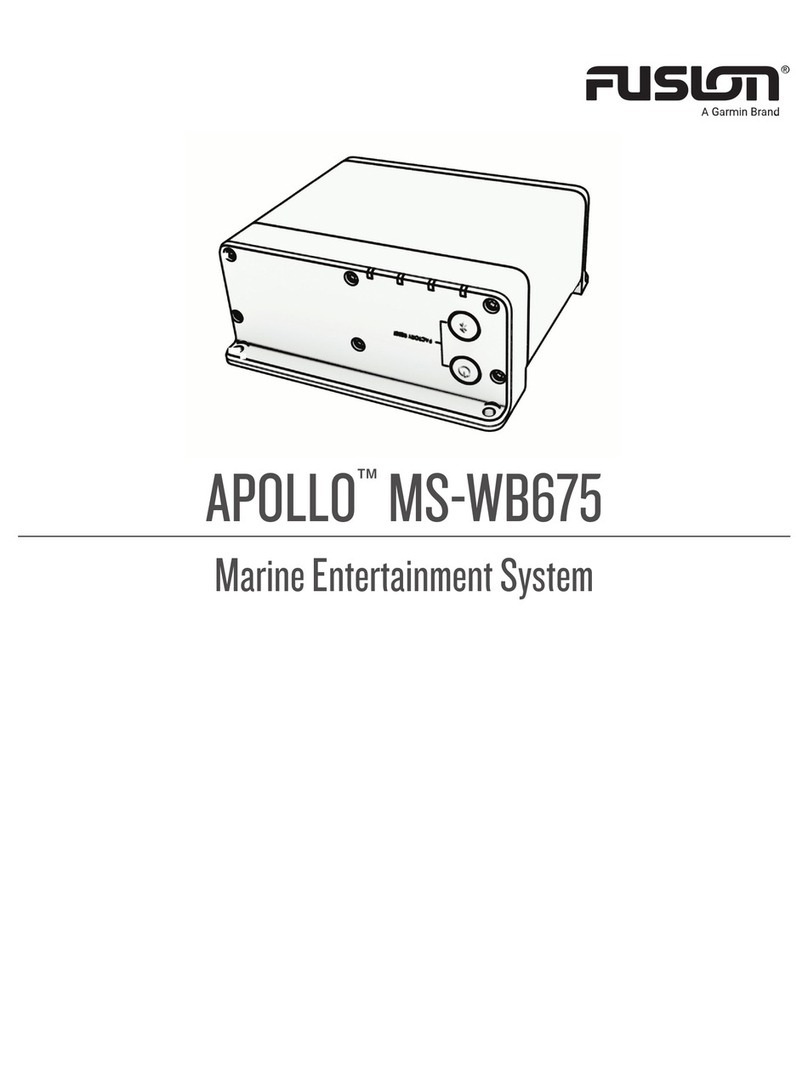
Garmin
Garmin FUSION APOLLO MS-WB675 manual
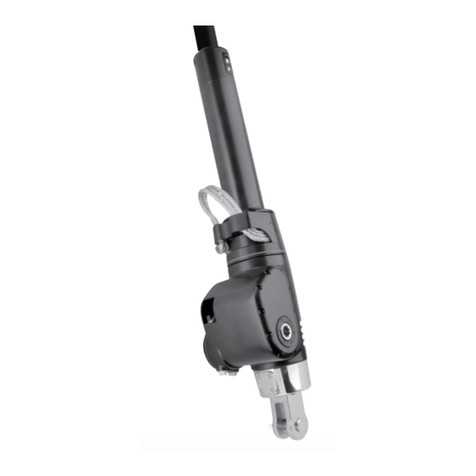
Harken
Harken MKIV Unit 3 installation manual
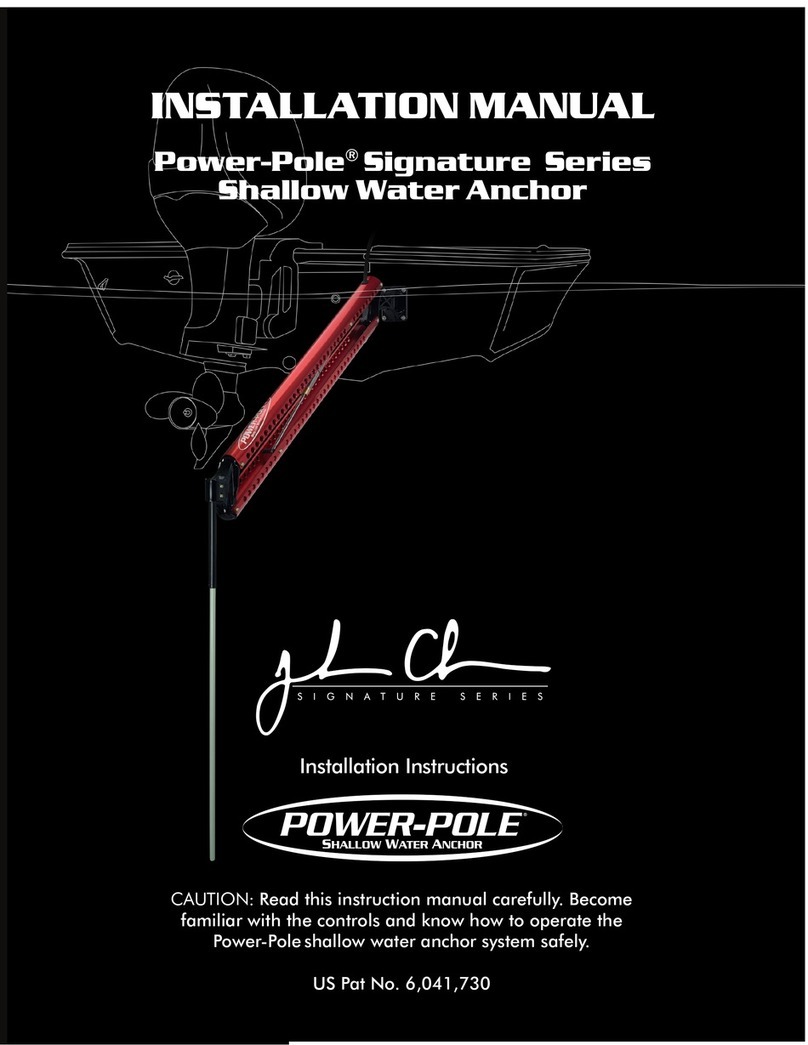
Power-Pole
Power-Pole Signature Series installation manual
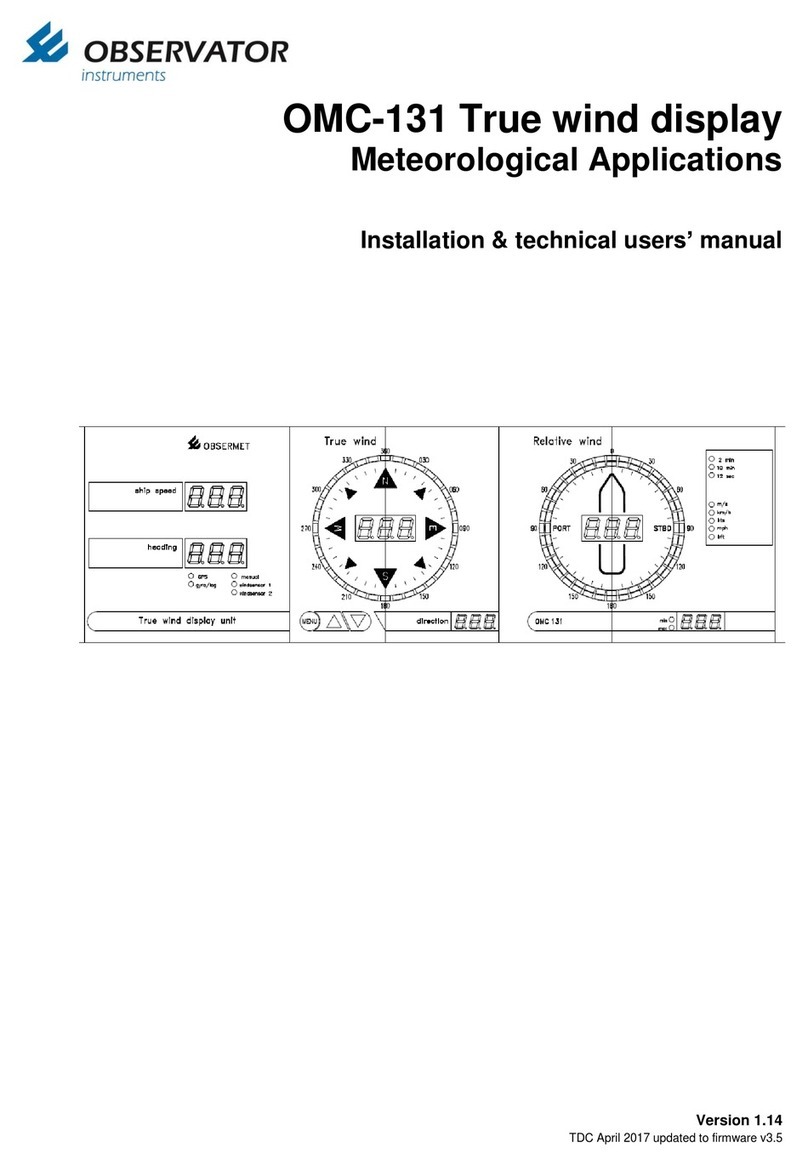
Observator Instruments
Observator Instruments OMC-131 Installation and technical manual
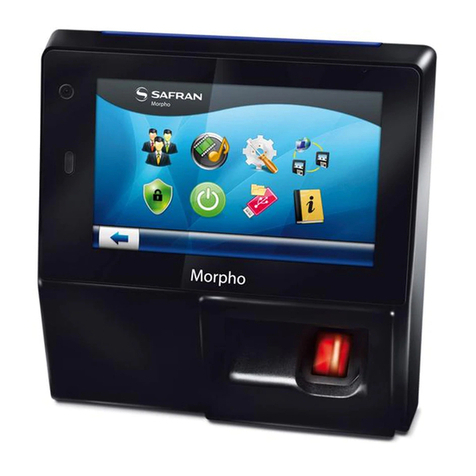
Safran
Safran MorphoAccess SIGMA Series Administration guide

Selden
Selden Furlex 200 S manual

